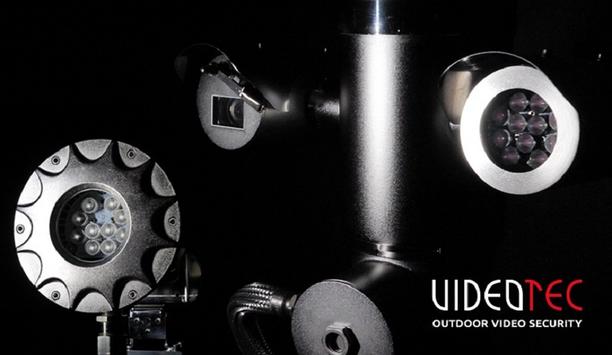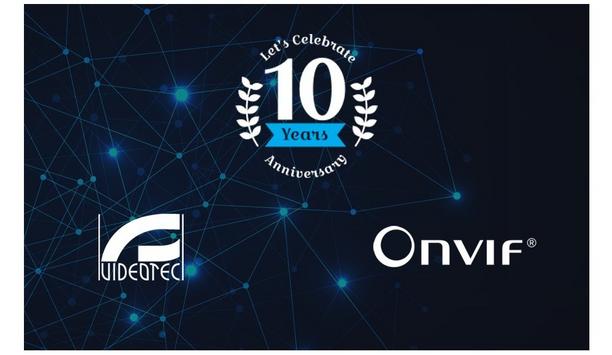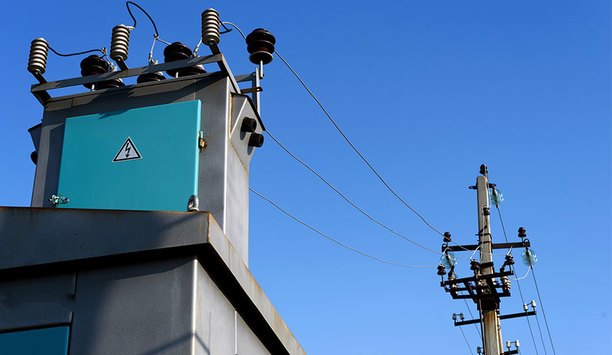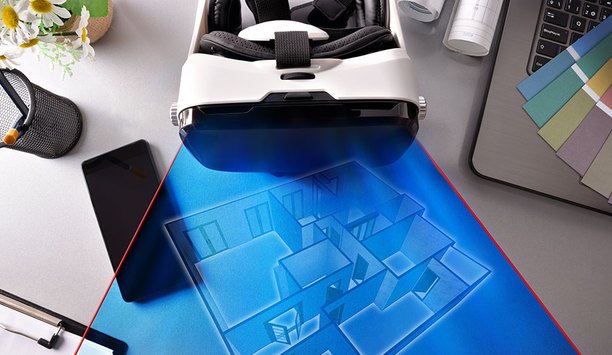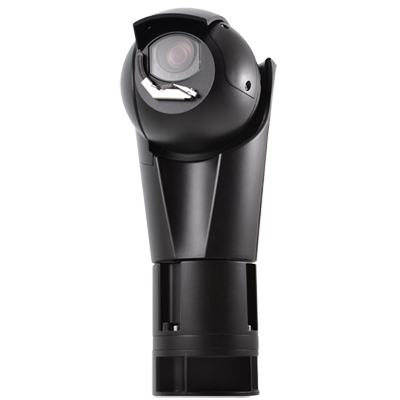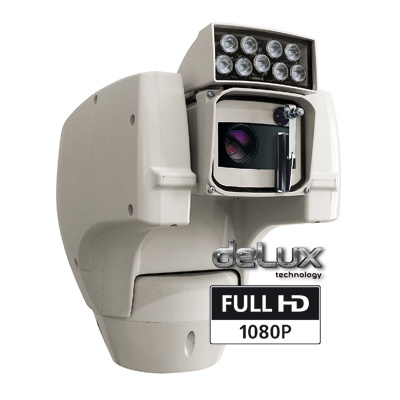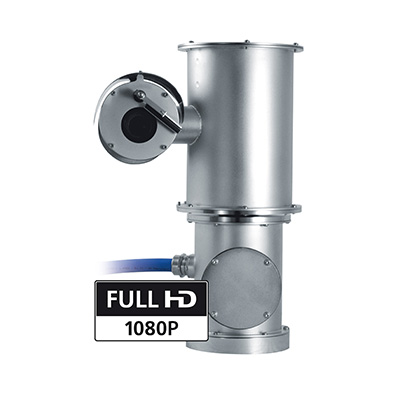Videotec - Experts & Thought Leaders
Latest Videotec news & announcements
The NOC fleet counts about ten oil products tankers sailing in the Singapore area. These vessels carry highly flammable fuel oil waste for proper recycling or disposal treatment. The client needed to equip three vessels of the fleet with a reliable onboard video surveillance system that was explosion-proof certificated given the presence of an explosive atmosphere. After various researches, the client decided to employ the MAXIMUS MMX stainless steel cameras for the video surveillance on board three NOC ships. MMX camera features and certifications MMX cameras are lightweight and compact in size making them easy to handle and mount The client has been satisfied with the MMX cameras as they are quick to install, easy to use, and there is no downtime for video footage, while performance and image quality are outstanding. This camera is certified ATEX/IECEx (Exd IIB, Ext IIIC) and UL Hazardous Location for America and Canada (Class I, Zone 1, Class I, Div. 2 and Class II, Zone 21, Class II Div 2). Its lightweight and compact size makes it easy to handle and mount. Moreover, the integrated bracket allows adapting the camera mounting to any surface, either wall, ceiling, or parapet, according to the application need. Various cabling options are available to reduce assembly time and cost. Whether the type of area is safe or hazardous, Videotec can respond to all of these changing and challenging demands with a comprehensive range of equipment with the most advanced, well-researched technical features for security systems that operate in oil and gas and offshore/onshore marine industries.
Videotec launches two new solutions for surveillance systems in outdoor areas classified as at risk of explosion. First is the MAXIMUS MPXL SERIES2 PTZ camera, which combines in a single device a Day/Night camera and a long-range LED illuminator. In addition, the new MAXIMUS MLX joins the MAXIMUS line; an explosion-proof certified stand-alone LED light for professional lighting of large outdoor areas. MAXIMUS MPXL SERIES2 This PTZ camera integrates a SONY FCB-EV7520 Day/Night camera with 30x zoom that provides FullHD, 1080p images and that, thanks to the built-in illuminator, can detect a target in outdoor areas up to 200m away, even during the night or in low light conditions. It is ideal for classified areas of the Oil & Gas sector, maritime and industrial, like drilling rigs, refineries, tanks, or the monitoring of processes in chemical and pharmaceutical manufacturing. LED Energy Consumption Control The illuminator LEDs automatically adjust to the zoom factor and illuminate the field of view uniformly The illuminator LEDs automatically adjust to the zoom factor and illuminate the field of view uniformly, eliminating hotspots and underexposure. Beam activation, spot or wide, can be done by a software by preset or zoom, by an alarm input, or manually. The "LED Energy Consumption Control" enables the illuminator to withstand high temperatures and thus ensure the correct operation of the LEDs throughout the life of the product. Durability and water resistance The construction is entirely made of AISI316 stainless steel, which offers maximum durability in corrosive environments. In addition, the IP66/IP67/IP68/IP69, NEMA Type 4X and Type 6P weather resistance rating ensures complete protection against ingress of water and dust, even in harsh conditions. This PTZ camera is certified for temperatures between +70°C and -40°C. GeoMove and GeoMove&Track The MPXL line is certified for hazardous areas with certifications for use in Zones 1 and 2, Group IIC (Gas), Zones 21 and 22, and Group IIIC (Dust). MAXIMUS MPXL SERIES2 can be integrated into more advanced video systems using the ONVIF Profile Q, S, and T protocol. As for all cameras of the MAXIMUS SERIES2 line, MPXL too can be geolocated on maps to support the GeoMove and GeoMove&Track features. The GeoMove feature is very useful in perimeter surveillance systems and for port traffic control because it allows users to frame any target through geographic coordinates, even in conditions of critical visibility or in the open sea. MAXIMUS MLX LED illuminators MAXIMUS MLX LED illuminators integrate perfectly into outdoor/indoor video surveillance applications MAXIMUS MLX LED illuminators integrate perfectly into outdoor/indoor video surveillance applications or process control systems, providing optimal area illumination and clear visibility in low light conditions and at night. Models with 850nm IR or white light are available for use in combination with surveillance cameras or as general lighting. The viewing distance reaches up to 125m (410ft). Quick installation and compact The 'LED Energy Consumption Control' enables the illuminator to withstand high temperatures and thus ensure the correct operation of the LEDs throughout the life of the product. Their construction is entirely made of AISI316 stainless steel, which offers maximum durability in corrosive environments. MLX illuminators are lightweight and their compact size fits well in confined spaces. Their installation is quick and easy due to the supplied bracket being useful for mounting on walls, ceilings, or parapets, depending on the application needs. Maritime and offshore The MLX line is certified for hazardous areas with certifications for use in Zones 1 and 2, Group IIB (Gas), Zones 21 and 22, and Group IIIC (Dust). It has also obtained the Lloyd's Register Type Approval System Test Specification No. 1 certification and can therefore be used in maritime and offshore applications.
With over 35 years of experience in the video surveillance sector, Videotec has actively spent the last 10 of those sharing in the ONVIF alliance mission to provide and promote standardised interfaces for effective interoperability of IP-based products. ONVIF open standard Adopting the ONVIF open standard guarantees optimum compatibility between IP products of different brands and makes integration into a security system easier and more secure.Over the past 10 years, the specialist engineers of VIDEOTEC's internal ONVIF team have collaborated directly with the organisation, making a significant and tangible contribution to the protocol's effective development, promoting ONVIF specifications as an industrial standard and their integration within VIDEOTEC IP products. Robust and cyber-secure IP-based products Videotec team's commitment was recognised and rewarded with the Onvif Award Program 2015 The Videotec team's commitment to the field was recognised and rewarded with the Onvif Award Program 2015. Videotec has a strong presence in several vertical markets, with prestigious references in the transport and traffic, maritime and industrial, and energy and oil sectors. Videotec is committed to providing its global partners with high-performance, robust, and cyber-secure IP-based products that meet the stringent needs of these markets. ONVIF Security Service To this end, Videotec has the ONVIF Security Service specification on which it bases the implementation of its IP products' IT security. The aim is to push the sector to move away from usernames and passwords toward the most up-to-date certificate-based authentication systems. Due to the ONVIF standard, Videotec products offer great flexibility, security, and full interoperability with third-party products, which allows them to function to optimum standards even in the most complex security systems. Video surveillance Videotec ONVIF team member Enrico Campana says, "Our direct contact with the world of ONVIF has helped us Videotec engineers transition from analogue to IP on all products available in our catalogue currently. Our experience of working side-by-side with technicians from other companies in the video surveillance sector has been an important stimulus in the expansion and the sharing of our know-how to play an active role in this evolution." "The skills acquired in recent years have given us the strength and confidence to face new technological challenges and satisfy increasingly stringent security, innovation, and reliability requirements."
Insights & Opinions from thought leaders at Videotec
Consolidation is a dominant trend in the security marketplace. Large companies typically swallow up smaller companies as a means of expanding both their technology portfolios and their geographic reach. Sometimes a big fish is swallowed up by an even bigger fish. Despite the pandemic and resulting economic challenges, the security market has continued to be a desirable environment for both big players and startups, which then provide abundant acquisition targets for the larger companies. Acquisitions of Motorola Motorola Solutions has been among the most acquisitive of the larger players, recently adding several smaller companies to their growing portfolio. Just this year, Motorola has acquired Ava Security, a video security and analytics company; Calipsa, another analytics company; and Videotec, an Italian provider of ruggedized video solutions for critical infrastructure applications. Video solutions that help to enhance safety and streamline operations while supporting customers In one announcement, Motorola chairman and CEO Greg Brown stated the goal of acquisitions is “to support our customers’ evolving security needs by expanding our portfolio of intelligent video solutions that help to enhance safety and streamline operations.” Previously, Motorola Solutions acquired Envysion, a video analytics company for the retail market. On the access control side, Motorola acquired Openpath Security, a cloud-based, mobile access control provider, in 2021. Motorola entered the video surveillance business back in 2018 with the acquisition of Avigilon for around $1 billion. Also now a part of Motorola are IndigoVision and Pelco, among others. ACRE's mergers and acquisition Another company active in the mergers and acquisition market has been ACRE (Access Control Related Enterprises). The company began with a spinoff from Ingersoll Rand in 2012 to become Vanderbilt Industries. As ACRE, the parent company has been active both in acquisitions and divestitures over the next decade. Vanderbilt grew with the acquisition of Siemens’ Security Products in 2015. ACRE owned Mercury Security, a manufacturer of OEM hardware used by access control companies, from 2013 until it was sold to HID Global in 2017. The acquisition of Razberi enhances the ComNet portfolio while providing complementary technologies ACRE’s more recent access control acquisitions are RS2 Technologies (in 2019), Open Options (2018), Feenics (2021), and Matrix Systems (2021). They acquired ComNet, a manufacturer of video and data transmission equipment, in 2016. The acquisition of Razberi (in 2020) enhances the ComNet portfolio and provides complementary technologies to the access control brands. Acquisition of ACRE ACRE itself was acquired by European investment firm Triton in 2021, and Joseph Grillo, the company’s founder and CEO, announced his retirement in 2022. His knowledge of the security and access control markets helped to drive the company’s growth, including 11 successful acquisitions in all. Securitas acquiring Stanley Security The acquisition of Stanley Security is transformational for both Securitas and the security industry Stanley Security has also made headlines. In December 2021, Securitas signed an agreement to acquire the Electronic Security Business from Stanley Black & Decker for $3.2 billion in cash. Securitas President and CEO Magnus Ahlqvist says, “the acquisition of Stanley Security is transformational for both Securitas and the security industry.” Allegion plc, global security products and solutions provider, later signed an agreement to acquire Stanley Access Technologies and assets related to the automatic entrance solutions business from Stanley Black & Decker, Inc. for $900 million. Acquisition by HID Global, ADT Inc. & Allied Universal HID Global has acquired Vizinex RFID, thus increasing its presence and relevance in key vertical markets, including healthcare/medical, manufacturing, oil and gas, data centres, etc. and adding a key technology to HID Global’s RFID tag portfolio. ADT Inc. recently expanded its geographic reach with the acquisition of Key-Rite Security, a locally owned and operated security provider specializing in access control, surveillance, intrusion, and intercom systems in Colorado and for customers across the United States. Allied Universal continues its strategic growth with the acquisition of Attenti Group, an electronic monitoring company Allied Universal has acquired Star Protection Agency, the largest Hawaiian-owned and veteran-owned security company in the state. Although Star is primarily a guard patrol service, with workers at 125 sites throughout the state, it provides a range of security technology and consulting services. Internationally, Allied Universal continues its strategic growth with the acquisition of Attenti Group, an electronic monitoring company. Allied Universal will integrate Attenti Group with G4S Monitoring Technologies, to create Allied Universal Electronic Monitoring Services. SALTO Systems making acquisition news Also internationally, SALTO Systems has made acquisition news by investing in Bluefield Smart Access, thus strengthening their portfolio of access control solutions. SALTO Systems is a manufacturer of electronic access control and operating system solutions, designed to provide a seamless, keyless and mobile experience for modern buildings. Also joining the SALTO Group is Cognitec Systems, a face recognition company. The goal is to strengthen their research, development and market reach while working with SALTO on new technologies for expanding biometric markets. SALTO strategically selected Cognitec Systems to meet market requests for adding face recognition and artificial intelligence (AI) technologies to the company’s electronic access control and ticketing solutions. Acquisitions by MOBOTIX and Resideo Technologies Resideo Technologies, Inc. entered into an agreement to acquire First Alert, Inc., a provider of home safety products Further, on the international scene, MOBOTIX has reached an agreement to acquire Vaxtor Group, Tres Cantos, Spain, an artificial intelligence (AI) based video analytics provider, specializing in Optical Character Recognition (OCR) and Deep Learning technologies. On the residential system's front, Resideo Technologies, Inc. entered into an agreement to acquire First Alert, Inc., a provider of home safety products, from Newell Brands Inc. for $593 million in an all-cash transaction. Established in 1969 and based in Aurora, Illinois, First Alert offers a strong omnichannel presence serving end-users directly through retail and e-commerce channels and professional contractors through relationships with distributors and home builders.
Intelligent solutions, such as those derived from artificial intelligence, help critical infrastructure organisations make sense of vast amounts of data. These integrated applications, such as advanced video analytics and facial recognition, can automatically pinpoint potential breaches and significant events, and send alerts to the appropriate personnel, departments, and agencies. These solutions can be powerful in unifying disparate command centre technologies, fusing critical data input from emergency calls and responder activity to enhance situational awareness. Electrical substations are particularly vulnerable (and in need of extra security) due to their role in power distribution and the nature of their equipment. The challenge power utilities worldwide are facing is finding an affordable solution, which can help detect, deter and facilitate an informed response to a substation security event. Data capture form to appear here! U.S. regulations In the United States, this need is furthered by the physical security mandate CIP-014 issued by the North American Electric Reliability Corporation (NERC), calling for identification of security issues, vulnerability assessments and deployment of appropriate processes and systems to address. CIP-014 identification of security issues, vulnerability assessments and deployment of appropriate processes and systems to address CIP-104 specifically calls for implemented security plans that include measures to deter, detect, delay, assess, communicate, coordinate and respond to potential physical threats and vulnerabilities. Manufacturers of video and other systems are designing products to serve the critical infrastructure market. For example, Dahua Technology offers explosion-proof cameras with a combination of rugged reliability and superior optics that is a fit for surveillance of explosive and corrosive environments, including chemical plants, refineries, and other facilities in the oil and gas industry. This explosion-proof series of cameras are housed in enclosures that are certified to the ATEX and IECEx standards for equipment in explosive atmospheres. Each explosion-proof camera features Dahua’s Starlight technology for ultra low-light sensitivity and high-definition sensors that deliver clear images in real-time. They are IP68-rated to prevent water and dust ingress. Each explosion-proof camera features Dahua’s Starlight technology for ultra low-light sensitivity and high-definition sensors that deliver clear images in real-time Video footage in extreme temperatures Another manufacturer, Videotec, offers a range of cameras and housings that provide video footage regardless of aggressive external factors, such as ice cold, scorching heat, desert sand, the force of sea or wind, total darkness, pollution, corrosion and even explosive agents. SightSensor thermal systems enable a utility to detect and respond to substation security incidents across multiple sitesSightLogix smart thermal camera systems have been deployed to protect substations for electric utilities and other critical infrastructure facilities. SightSensor thermal systems enable a utility to detect and respond to substation security incidents across multiple sites, ranging from copper theft to vandalism while also meeting regulatory compliance. At each substation facility, Thermal SightSensors are positioned along the perimeter, and are paired with a high-resolution pan-tilt-zoom camera for alarm assessment. When a Thermal SightSensor detects an intruder, the target’s location information is sent over the network to a SightTracker PTZ controller, which automatically zooms and steers PTZ cameras to follow the intruder. The target’s location is also displayed on a topology site map to provide real-time situational awareness. Alarms are sent to the utility’s 24-hour security operations centre, which will contact law enforcement in real time when unauthorised intrusions are detected. Integrated intrusion detection and lighting systems The Senstar LM100 hybrid perimeter intrusion detection and intelligent lighting system is simplifying security at one U.S. electrical utility company. For years, the utility company had integrated its perimeter intrusion detection and lighting systems. The company has now installed the Senstar LM100 which provides detection and lighting in one product and saves them over $80,000 per site. The savings are a result of the reduction of electrical requirements, conduit, grounding, and associated labor, as well as the removal of certain equipment from project scope that are required for the two-system integration. The Senstar LM100’s perimeter LED-based lighting acts as an initial deterrent. If an intruder persists and an attempt to cut, climb or otherwise break through the fence is detected, the closest luminaire begins to strobe, and an alert is sent via a security management system. The intruder knows immediately they have been detected and that their exact location is known by security and others in the vicinity.
Building Information Modelling (BIM) can be described as the ‘use of shared digital representation of a built object (including buildings, bridges, roads, process plants, critical infrastructures, etc.) to facilitate design, construction and operation processes to form a reliable basis for decisions’. The National Institute of Building Sciences (NIBS) defines it simply as the “digital representation of the physical and functional characteristics of an object”. Understanding BIM construct BIM is neither a product nor software but rather is a “cache of building information” to which graphic data (such as drawings) and certain technical attributes (such as technical data sheets and associated characteristics) that are also related to the foreseen life cycle can be added. BIM represents a collaborative planning method as it allows for the integration of useful information for every phase of planning in a single model What BIM represents therefore is a collaborative planning method as it allows for the integration of useful information for every phase of planning – architectural, structural, plant design and installation, energy, management – into a single model. Project functionality and performance While CAD allows a project to be designed with 2D or 3D drawings, BIM also specifies the functionality and performance of each BIM object in the project or in the entire building process. A BIM object can hold any information pertaining to the building as a whole, or its parts. The most common information collected in a BIM is geographic location, structure, the properties of the materials/components/systems and technical elements, construction phases and maintenance procedures. Fields of application Building Information Modelling is used both in the construction sector, for design and installation (architecture, engineering, technical installations…) as well as in facility management. BIM supports the general improvement of a project along the entire life cycle of the construction process The role of BIM within the construction industry (by means of participants such as architects, engineers, surveyors, experts, builders, consultants and clients) is to support communication, cooperation, simulation and the general improvement of a project along the entire life cycle of the construction process. Advantages of BIM technology BIM technology offers a great number of advantages, such as greater efficiency and productivity, fewer errors, less downtime, reduced costs, greater interoperability, maximum information sharing, and more accurate and consistent control over a project. Generally, a BIM object is saved in .ifc (Industry Foundation Class) format. These IFC files are classed as 3D image files that also contain other technical information and are compatible with any software that works with BIM technology. Standard process and regulation BIM will become the standard process for all buildings and is currently being integrated into public contracts legislation across Europe. With Directive 2014/24/EU, the European Union has introduced a few guidelines to member countries on using the BIM system in the design and construction of public works. The BIM system is therefore strongly supported as a means of increasing the effectiveness and transparency of procurement procedures. Comparable BIM tools are necessary in order to allow the various softwares to ‘read’ the relevant data to manage all different parts of the construction sector Mandatory use of BIM process in public works In terms of the BIM process spreading to European operators (planners and companies), the leading nations are the Netherlands followed by the United Kingdom, whose government is bringing in a plan to make the use of BIM mandatory for public works. Even in Northern Europe and the United States, BIM technology has been used since 2000. Since the construction sector varies so widely (plants, structures, energy), it has become evident that no software exists that can manage all these different parts. Instead, comparable BIM tools are necessary in order to allow the various softwares to “read” the relevant data. BIM technology makes it possible to ascertain exactly how the cameras will fit into a building’s layout, reducing the risk of unexpected blind spots BIM and video surveillance Security has now become an integral part of the design process of any new large building. To provide the highest levels of security and avoid any blind spots that might constitute a security breach, the video surveillance system has to be planned in conjunction with other essential services, such as the electrics and hydraulics. BIM allows security system designers to interactively understand camera coverage, making it easier to identify the required models and to optimise the system layout. Reducing camera installation risks In actual fact, the technology makes it possible to ascertain exactly how the cameras will fit into a building’s layout (both internally and externally) and to determine whether the view of any camera is blocked by columns, lighting posts, trees, etc. This reduces the risk of unexpected blind spots. It is therefore possible to see how the cameras will be configured before they are installed, and which areas will be covered by the surveillance system after installation.
Using artificial intelligence (AI) to automate physical security systems
DownloadA modern guide to data loss prevention
Download7 proven solutions for law enforcement key control and asset management
DownloadThe truth behind 9 mobile access myths
DownloadAccess control system planning phase 2
DownloadULISSE EVO now with smart Videotec analysis
Videotec Ulisse Compact Delux
Videotec NXPTZHD camera for aggressive environments











